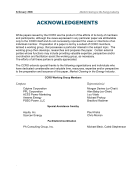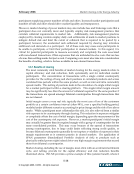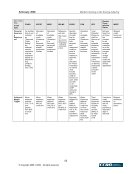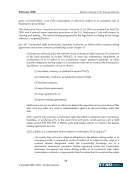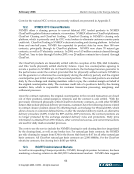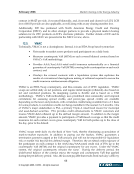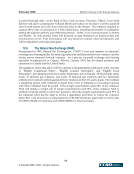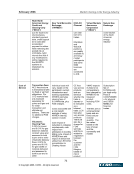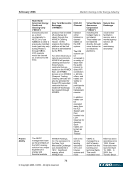February 2006 Market Clearing in the Energy Industry 5-37 © Copyright 2006, CCRO. All rights reserved. In those electricity markets that have not been deregulated at the retail level, the state regulatory body may assume other functions, including regulating the issuance of Request for Proposals (RFPs) as part of utility integrated resource planning processes, regulating retail sales and rates, and offering a public complaint process. The RFP’s may not be homogenous. The RFP’s may be for base load, intermediate and peaking capacity, both short-term and/or long-term. Additionally, the RFP may give preference to proposals that allow for greater fuel diversity, favor PPAs over self-builds, or include an option to purchase the resource. All of these variations of RFP’s lead to products that may be illiquid and, therefore, do not lend themselves well to clearing. This is especially true for life of asset proposals that may have a term of 20 years or more. An additional issue in state markets that have not been deregulated is that the resident utilities may not have adequate incentives to engage in a hedging program, especially with respect to fuel market volatility.27 As such, in these markets, the depth of the markets’ liquidity and pricing may be more limited, as the utility may not engage in clearing services for those product. Even in ISO/RTO administered markets, state regulation of competitive procurement of wholesale power, such as through default service (i.e. POLR obligations) RFPs, can impact wholesale power market functions. Examples of this can be seen in New Jersey’s BGS Auction, or with Maine’s Standard Offer Service. Again, as with RFP’s, these products may contain terms and conditions unique to each state and, due to the lack of homogeneity, are less liquid. A further issue impacting clearing solutions is regulatory risk, which should be addressed by the clearing solution. Examples of regulatory risk include the low energy price caps that resulted from the energy crisis in California, and the low wholesale market electric energy prices observed relative to the extremely high short-term gas prices during the extreme cold weather in New England in January 2004.28 These events, as well as POLR risk, illustrate the need for any clearing solution to have provisions to manage these risks, including consideration for sunset clauses to limit POLR risk in RTO markets. Moreover, clearing solutions targeted at a specific state or ISO/RTO market needs to include input from both state regulators and the ISO/RTO (if one exists) to develop processes to mitigate the potential impact of these risks. 5.6. The implications of market clearing Market clearing has been a major factor in creating a liquid market in natural gas and other commodities. The advent of widespread clearing for power commodities in the US could have similarly broad implications for the market, in terms of increasing the proportion of financial transactions vs. physical transactions, lower hurdles to entry – such as decreased margin requirements in order to transact, which should in turn provide a greater number of 27 Some state regulated utilities are permitted to pass fuel cost increases through to retail consumers through fuel clause provisions. 28 Reports by both the FERC Office of Market Oversight and Investigation (“OMOI”) and the ISO New England, Inc. market monitor revealed that actions taken to assure reliable electric service actually led to wholesale spot energy market prices for electricity well below the cost of gas-fired generation scheduled in that period.
Purchased by unknown, nofirst nolast From: CCRO Library (library.ccro.org)


